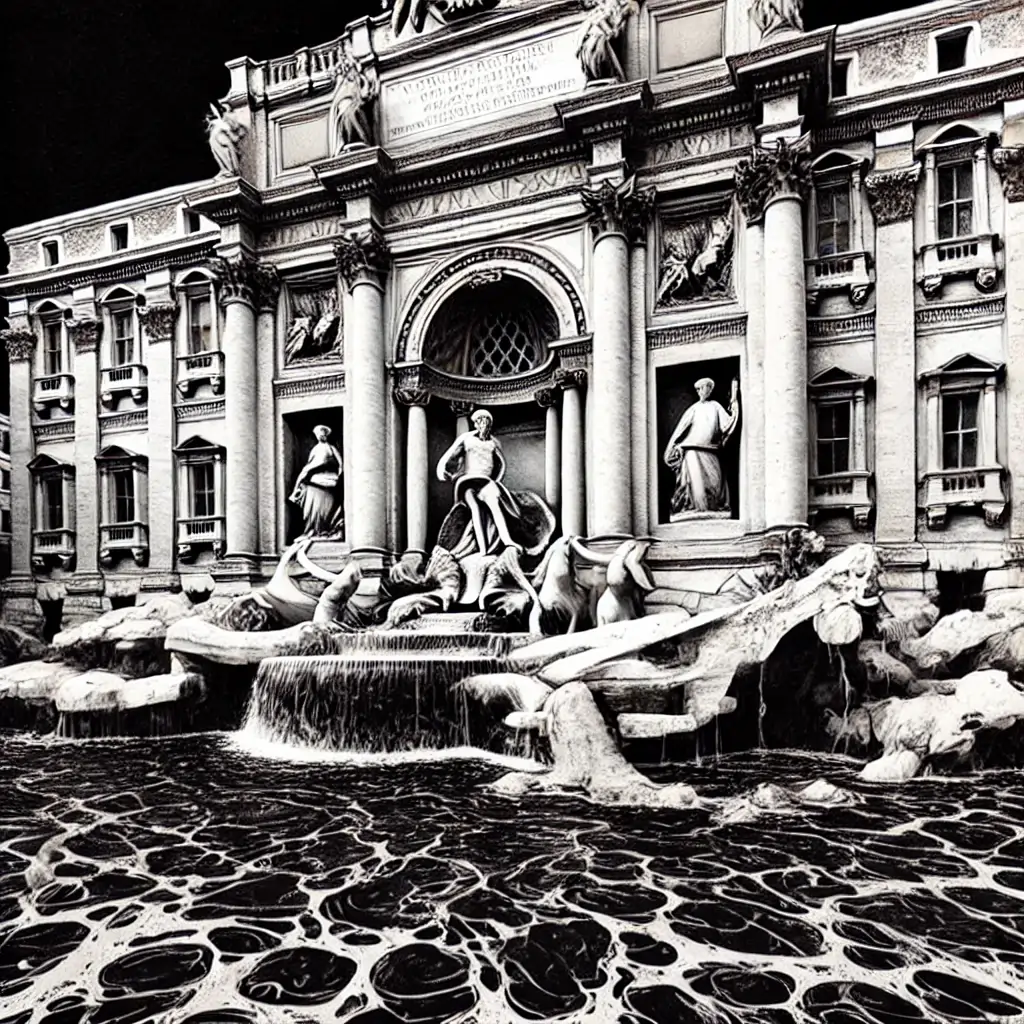Lesson made on May 22, 2023
Download Printable Lesson (PDF)
Download Printable Answer Key (PDF)
Reading Lesson:
Climate change activists from a group called Ultima Generazione (Last Generation) turned the Trevi Fountain’s water in Rome black on Sunday. They used diluted charcoal to change the color. The group did this to protest against climate change and make people think about the dangers of using fossil fuels, such as coal, oil, and gas. Burning these fuels is bad for our environment because they contribute to global warming.
The protestors also referred to recent deadly floods in a part of Italy called Emilia Romagna, saying these types of disasters are happening because of climate change. They were arrested by police for what they did to the fountain.
Officials in Rome were upset about what happened. They said that it was wrong to damage a famous place that many people love to visit. The Mayor of Rome said it would take a lot of time, effort, and water to clean the fountain and restore it back to normal.
This is not the first time these activists have put charcoal in famous fountains. They’ve done it twice before to other fountains in Rome. Their message is that they want the government to take more action to deal with climate change. Other groups agree, saying Italy isn’t ready to handle the problems that climate change can cause, like more floods.
The Trevi Fountain is special because people throw coins into it, and this ensures that they will come back to Rome one day. The coins are collected and given to a charity that helps people. So, the act of the activists could also affect the collection for the charity.
Comprehension Questions:
Speaking and Writing Activities:
– Discuss these questions with a partner or a small group.
– Choose one topic and write a response to it. Show your writing to a classmate or teacher.
1. Do you think it’s okay to damage public property during a protest? Why or why not?
2. How can countries prepare for the problems caused by climate change, such as more floods?
3. What is an example of a successful protest in the history of the world? Describe what happened.
More Reading Practice:
What is the Trevi Fountain?
The Trevi Fountain, or Fontana di Trevi, is a famous fountain in Rome, Italy.
The story starts more than 2,000 years ago, during ancient Roman times. Back then, Rome’s fountains didn’t come from pipes underground like we have now. Instead, they came from aqueducts, which are like long bridges for water. The Romans were masters of building aqueducts, and one of these, called the Aqua Virgo, was used to bring water to the place where the Trevi Fountain now stands.
The fountain we see today, however, was not built until much later, in the 1700s. A very talented architect named Nicola Salvi started the work in 1732, but he passed away before he could see it finished. The project was completed by Giuseppe Pannini in 1762.
The Trevi Fountain is not just a place where water comes out. It’s a masterpiece of art. It’s big, and it’s beautiful. The design tells a story. At the center, you see Oceanus, the god of all the Earth’s water, riding a chariot shaped like a shell, pulled by seahorses. And these are not regular seahorses. They are wild and untamed, just like the sea can sometimes be. This story is not written down, but is shown in the stone.
So, why is the Trevi Fountain important? For one, it’s a symbol of Rome’s rich history and culture. People from all over the world come to see it, just like they go to see the Colosseum or the Pantheon. It’s one of those places that you have to visit when you’re in Rome.
There’s also a tradition connected to the Trevi Fountain. It’s said that if you throw a coin over your shoulder into the fountain, you will someday return to Rome. This tradition makes the Trevi Fountain a symbol of hope and dreams.
But the Trevi Fountain is not just a symbol, it’s also very useful. The money people throw into the fountain is collected and used to help people in need.
What is the Last Generation (Ultima Generazione)?
“The Last Generation” is a group of climate change activists who are known for their daring protests in Germany, Italy, and Austria. They started in 2021 and named themselves to highlight their belief that their generation may be the last one able to prevent a climate disaster. The group believes we are in a climate emergency, and that the cost of fixing the climate crisis should be paid for by the rich.
“The Last Generation” is famous for their road blockades. In 2022, they held 276 of these in Germany and carried out a total of 370 actions in the first ten months of the year. They also threw soup and mashed potatoes at famous paintings in Italy and Potsdam, but thankfully the artwork was not damaged.
Not everyone agrees with their tactics. Some have reacted with anger and threats of violence. Despite this, “The Last Generation” continues to protest in creative ways. They’ve covered themselves in mud outside a Senate building, poured charcoal into the Trevi Fountain, and glued themselves to a race track and an artwork. Their actions have led to trouble with the law. In May 2023, the police arrested activists, shut down their website, and froze their accounts. Two members were even accused of planning an attack on an oil pipeline.
Link: Photos of the protest at Trevi Fountain
Link: Photos of Trevi Fountain
ESL lesson about new rules for Italian citizenship by descent
ESL lesson about an African art project about climate change

